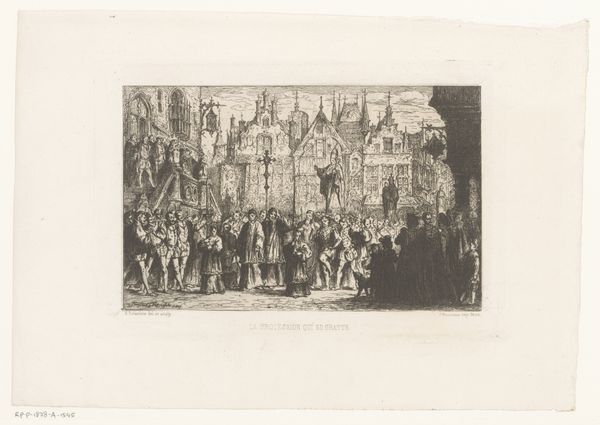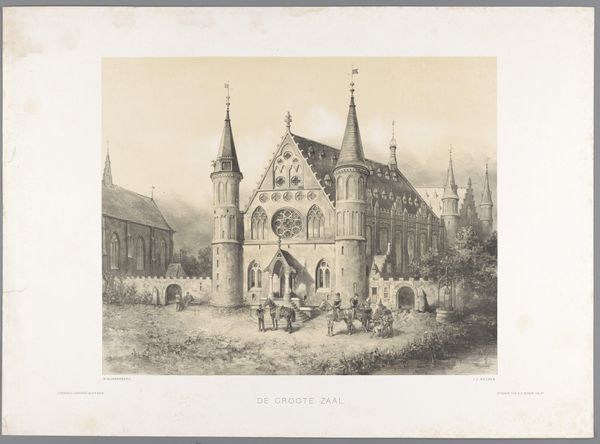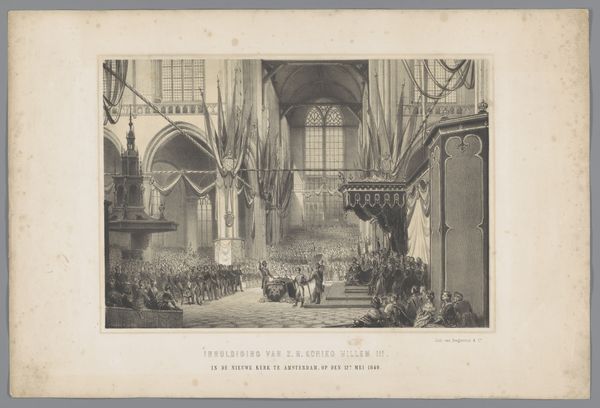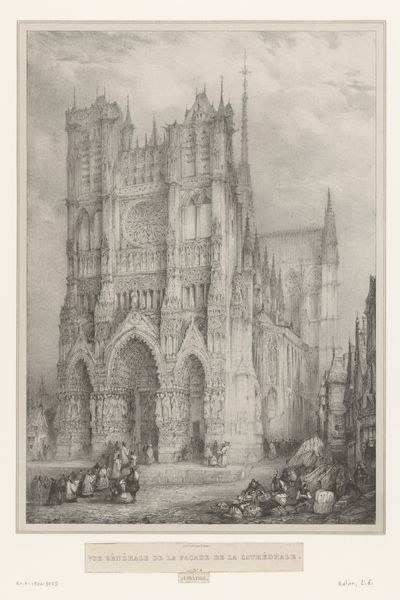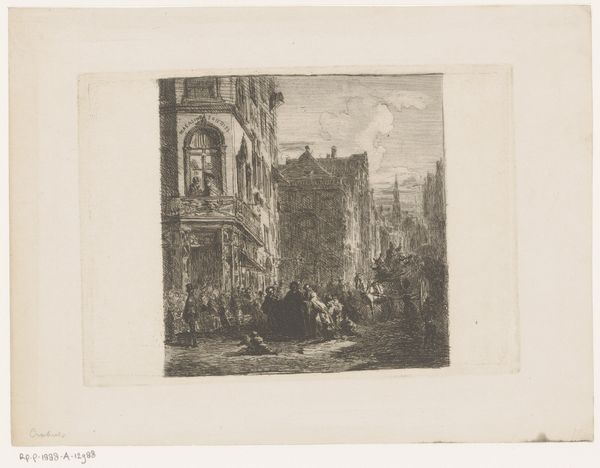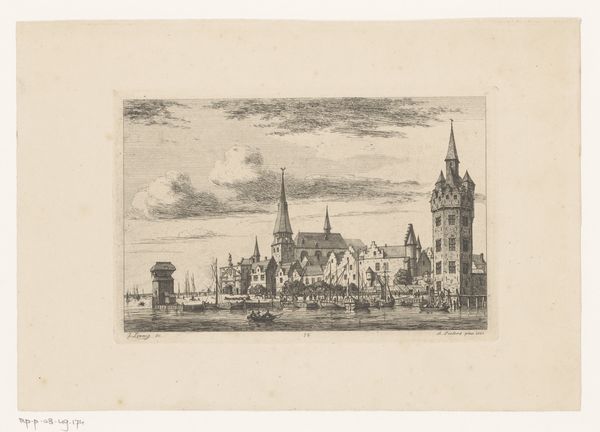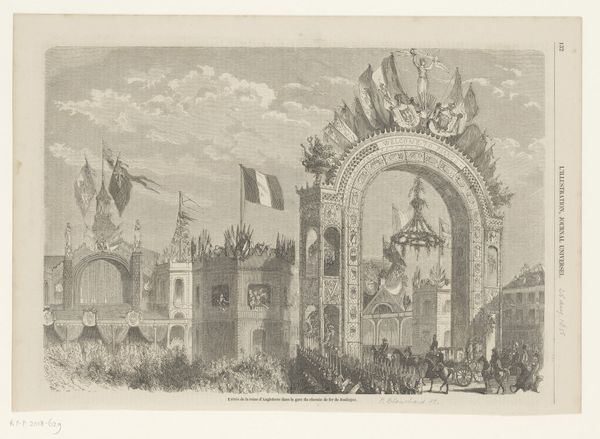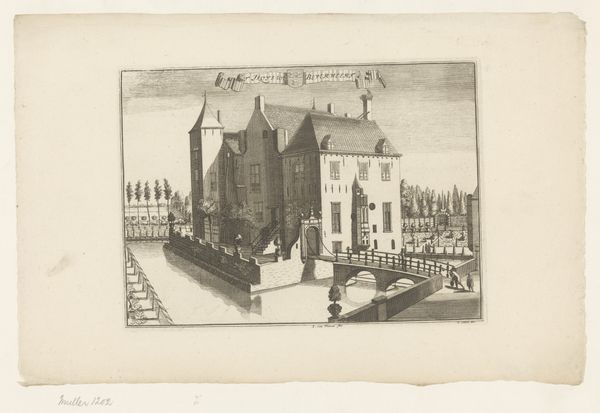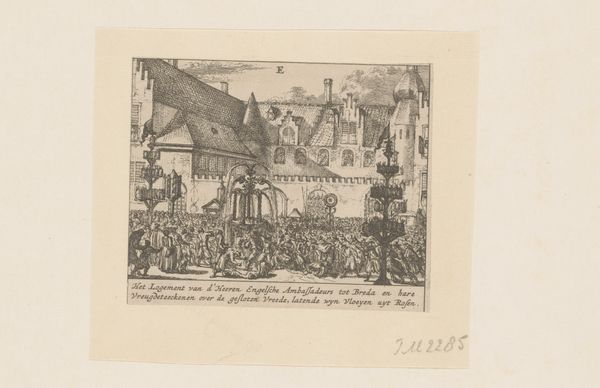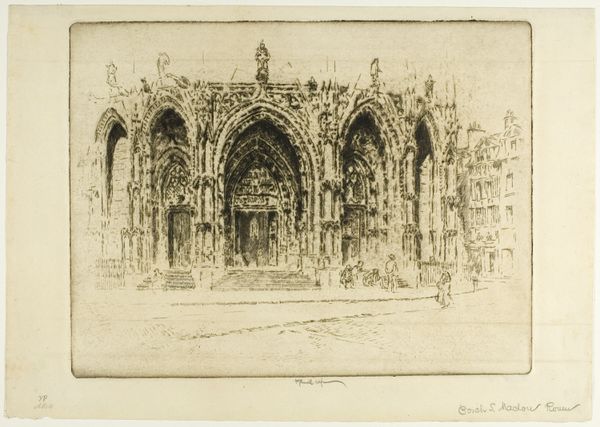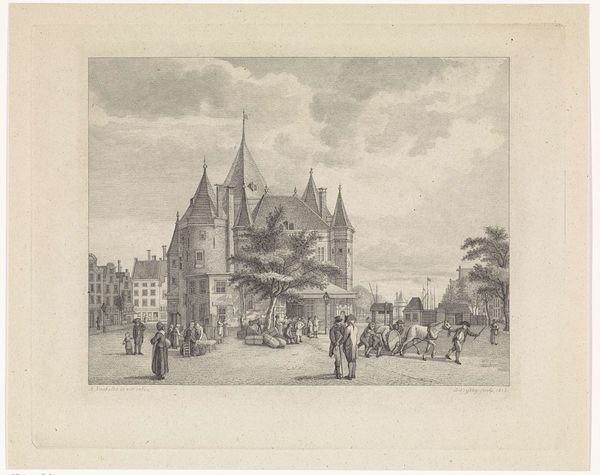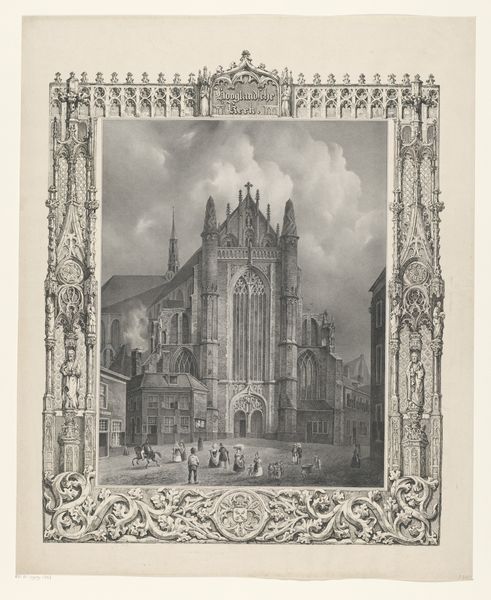
Dimensions: height 527 mm, width 713 mm
Copyright: Rijks Museum: Open Domain
Curator: This is Eugène Cicéri's "Theaterdecor voor de eerste acte van het stuk La juive," created between 1854 and 1858. It is an engraving currently housed here at the Rijksmuseum. Editor: The stage design itself seems incredibly meticulous. Almost too perfect, if that makes sense. The scene's mood feels decidedly somber, even restrained despite the crowd of figures depicted. Curator: Absolutely. Note the pronounced use of linear perspective drawing our gaze towards the vanishing point in the distance. The composition is meticulously structured, dividing the space into distinct zones through architecture. Consider the interplay between light and shadow and the careful modeling of forms. These all serve to create depth and realism. Editor: But how might the material realities shape this illusion? The engraver is tasked with turning ephemeral theater into permanent objects. The crosshatching mimics light and shadow, yet each individual mark points to manual labor and choices. And also it strikes me that romanticised as this historical past might seem, such performances rely on contemporary labour: printmakers, actors, costume makers, musicians, all contributing in tangible ways. It invites contemplation about value, what kind of labor becomes venerated versus easily ignored. Curator: A valid observation, to be sure, that underscores the inherent dialectic. The engraving as a print embodies accessibility but transforms the spectacle into reproducible images divorced from their original sensory encounter. As art, however, Cicéri elevates what he captures from the stage beyond the quotidian world, suggesting we see not just a crowd but symbolic significance. It transcends mere documentation by evoking idealized themes associated with Romanticism such as grandeur or longing. Editor: Yet perhaps it's precisely in these contradictions that our fascination resides—in reconciling our perception of historical artifice with modern sensitivities towards work and consumption. How are our preconceptions concerning past and present shaped as labor changes across eras? The tension encapsulates shifting relations inherent across economic paradigms from feudal stagecraft towards potentially mass cultural dissemination allowed because of engraving! Curator: It prompts contemplation on what makes art transcendent and what situates the art firmly rooted within its socio-historical matrix! A captivating example that invites many inquiries. Editor: Agreed. Indeed, engaging material conditions provides useful ways that might enable an enriched understanding rather purely formal approach offers—a more nuanced lens perhaps through how productions occur!
Comments
No comments
Be the first to comment and join the conversation on the ultimate creative platform.
